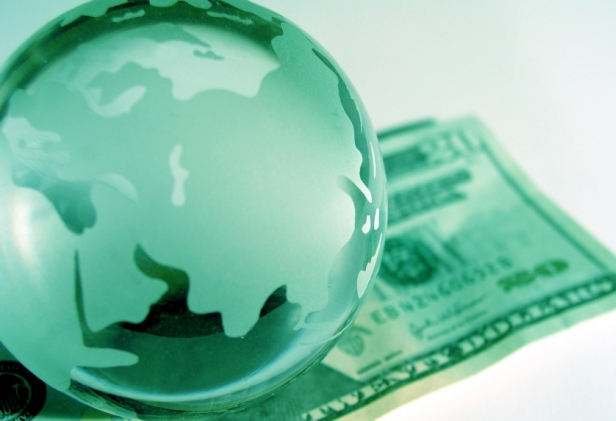Henry Waxman (D-CA) and Ed Markey (D-MA) have circulated a draft proposal of allowance allocations for their landmark energy and climate legislation (see here and below). They explain:
Emission allowances will be allocated to accomplish three primary goals: (1) to protect consumers from energy price increases; (2) to assist industry in the transition to a clean energy economy; and (3) to spur energy efficiency and the development and deployment of clean energy technology. A small amount of allowances will be allocated to prevent deforestation and support national and international adaptation efforts and for other purposes.
No doubt many environmentalists and progressives will be unhappy with the amount of money that appear to go to polluters. But in fact, most of that money goes to regulated entities, and the regulators can and will make sure that the money goes to consumers and businesses, as well as energy efficiency programs, and not windfall profits. One of the progressive community’s leading experts on utilities has agreed to write a guest blog post on this very subject for me next week.
While giving most of the money directly back to consumers is certainly my preference, that is just not the way the politics plays, at least at first. I will say that giving the money to the regulated utilities does have the added benefit of regional equity. One of the greatest sources of opposition to giving most of this money back through the tax system comes from Midwestern and Southern politicians who see that strategy as taking money from their constituents and giving it to those of us who live on the coasts.
If you still think this is a rip-off and/or don’t think the public utility commissioners will get the money into the hands of consumers, I’d urge you to read (or watch) this E&E TV interview of Richard Morgan, a DC commissioner and leader of the National Association of Regulatory Utility Commissioners’ Task Force on Climate. He explains that regulated utilities “can’t just set prices wherever they want and, in fact, as utility regulators we’re obligated to pass along to consumers any of the benefits of free emissions allowances that these regulated utilities might receive.“
Morgan further explains
We can use these funds to lower their rates or we could direct the funds to be spent on energy efficiency programs, low income assistance, or perhaps research on new clean technologies to help us find better ways to address the climate situation.
The bottom line for me is that I just don’t see the allocations as a reason to oppose this bill or indeed as a reason not to strongly support it.
I would also add that the price of one ton of carbon dioxide is going to be very low at first maybe around $5 to $10 a ton in the first few years, and then no more than, say, $15 a ton in 2020. Why? We are cramming way too many renewables into the marketplace already (see “I predict U.S. carbon dioxide emissions peaked in 2007!” and “total of 8500 MW of concentrated solar thermal planned for 2014 in U.S. alone“). And we have so many low-cost strategies for cutting greenhouse gas emissions (see “Intro to the core climate solutions” and “If Obama stops dirty coal, as he must, what will replace it? Part 1” and “Part 2: An intro to biomass cofiring“). And, of course, oil will probably be well above $150 a barrel by the end of the next decade.
That means the total amount to divvy up in 2020 will only be some $70 to $80 billion. Now, admittedly, that ain’t your father’s allowance, but it really can’t have that much impact one way or another since it’ll be under 0.5% of GDP. A CO2 price of $14 a ton only adds 1.5 cents per kwh to 100% coal power.
Anyway, here is how the allowances are split up — summary courtesy of Greenwire (subs. req’d):
- The electric utility industry, which produces the largest share of U.S. greenhouse gas emissions, would receive 35 percent of the allowances for free. More specifically, state-regulated local electric-distribution companies will get 30 percent of the credits, with a stipulation that they must use the funds to protect consumers from electricity price increases. Merchant coal and long-term power producers will get the remaining 5 percent of the allowances. All of the utility sector credits will be distributed according to a formula suggested by the industry, split along historic emission levels and retail sales. Credits will be phased out between 2026 and 2030.
- Local natural gas distribution companies would get 9 percent of the allowances, with a requirement that state-regulated firms use the funds to protect consumers from natural gas price increases. The free allowances will be phased out between 2026 and 2030.
- States would get 1.5 percent of the allowances for programs to benefit users of home heating oil and propane, an issue of primary concern in the Northeast. The free allowances will be phased out between 2026 and 2030.
- Democrats plan to begin auctioning 15 percent of the allowances around 2011, with the proceeds directed toward low- and moderate-income families. The funds would be distributed via tax credits, direct payments and electronic benefit payments — which is similar to how states now process food stamps and other low-income assistance programs. Unlike the free credits, the payments will not phase out. U.S. EPA would have a year to set up the program following enactment, with the first compliance auction beginning in 2012. The House Ways and Means Committee must sign off on this provision.
- Energy-intensive industries, including pulp, paper, cement and steel, would get free credits — 15 percent starting in 2014 but phasing out by about 2 percent per year. The allowances will be phased out after 2025. Also, the bill would give the president authority to impose tariffs on carbon-intensive goods from developing countries.
- Oil refiners will get 2 percent allowances for free, starting in 2014 and ending in 2016.
- Carbon capture and storage efforts would get a boost from the bill, with 2 percent of the allowances from 2014 to 2017 and 5 percent from 2018 and beyond. Democrats say the allowances will help electric utilities “cover the cost of installing and operating carbon capture and sequestration technologies.”
- States would get free allowances to invest in renewables and energy efficiency. More specifically, they would get 10 percent from 2012 to 2015, 7.5 percent from 2016 to 2017, 6.5 percent from 2018 to 2021, and 5 percent after that.
- The battered auto industry would get 3 percent of the allowances through 2017 and 1 percent from 2018 to 2025. The allowances must be used for increased production of electric and advanced vehicles. Rep. Bart Stupak (D-Mich.) said today several Democrats were considering an amendment on this provision that would set additional criteria on auto manufacturers to keep them from shifting their production out of the country.
- “Clean Energy Innovation Centers” would get 1 percent of the allowances for research and development at universities and institutions.
- Efforts to prevent tropical deforestation would see 5 percent of the allowances from 2012 to 2025, 3 percent from 2026 to 2030, and 2 percent from 2031 and beyond. Democrats said the free allowances would lead to the equivalent of a 10 percent reduction in U.S. greenhouse gas emissions by 2020, compared to 2005 levels.
- Domestic adaptation efforts would get 2 percent of the allowances from 2012 through 2021, increasing to 4 percent between 2022 and 2026 and to 8 percent in 2027 and beyond. Half of the allowances will go toward wildlife and natural resource protection, while the other half are directed to other areas, such as public health.
- International adaptation and clean technology transfer would get 2 percent of the allowances from 2012 to 2021, increasing to 4 percent from 2022 to 2026 and then to 8 percent in 2027 and beyond. Democrats would split the allowances 50-50 between the two goals.
- Worker assistance and job training would get 0.5 percent of the allowances from 2012 to 2021, increasing to 1 percent after that.
- Democrats say that some of the remaining, unallocated allowances will be auctioned off, with the revenue directed to the Treasury to ensure the bill is deficit neutral. “We’re taking our CBO haircut,” a House Democratic aide said yesterday, referring to the Congressional Budget Office. Any additional allowances would also be used for consumer protection.
Next week is going to be a busy one for climate junkies!



